Calcium-Rich Foods That Are Just as Good as a Glass of Milk

"Hearst Magazines and Yahoo may earn commission or revenue on some items through these links."
Ever since you were a little kid, people (and commercials) likely told you to drink lots of milk because it would help you build strong bones thanks to its abundance of calcium. In fact, your nerves, muscles, and hormones depend on calcium to function properly, and 98 percent of your body’s calcium is stored in your bones, according to the National Institutes of Health (NIH).
You probably think you’re getting enough of this mineral every day. “Most people think they’re doing okay, but the reality is that most Americans don’t get enough calcium after they are young children,” says Isabel Maples, M.Ed., R.D.N., spokesperson for the Academy of Nutrition and Dietetics. “It’s one of the top four missing nutrients in the American diet, along with vitamin D, potassium, and fiber. About 8 out of 10 men and 9 out of 10 teen girls and women don’t get the recommended amount of calcium. Teens, women older than age 50, and men over age 70 are particularly bad about getting the recommended amounts.”
Most adults need 1,000 to 1,200 milligrams of calcium per day, with slightly higher levels for teens and pregnant or lactating people. And while that can feel like a big number—especially if you avoid animal or dairy products—there’s an easy fix. “There are many different foods that are good sources of calcium,” says Katherine Zeratsky, R.D.N., a clinical dietitian at Mayo Clinic. “Reading the label can help you make good decisions. Foods that are listed as a ‘good source’ of calcium on packaging must contain 10 to 19 percent of the recommended daily value, while those that are labeled ‘excellent’ must contain 20 percent or more of the daily value.”
While you’ll find dairy products on this list, some alternatives, such as certain leafy greens, may surprise you. Ready to get your fix? Here’s how to add more calcium into your diet.
Kale
You can find loads of calcium in plant foods! Kale is one of the best sources—one cooked cup packs 177 mg of calcium, while one raw cup delivers 53 mg. It’s even more bioavailable than the calcium in milk, meaning that your body has an easier time absorbing it, says Connie M. Weaver, Ph.D., distinguished professor of research at San Diego State University.
Not all greens are created equal, though. Oxalic acid—prevalent in plants like spinach, chard, and beet greens—binds to calcium, which can mess with your body’s ability to absorb it properly. Even though spinach technically has a lot of calcium, it’s only a tenth as bioavailable as that from milk because of the oxalic acid. “So it’s a terrible source of calcium,” says Dr. Weaver.
Try it: You don’t need to fill up on salads to enjoy kale. This garlic shrimp and kale stir-fry is an easy and flavorful way to sneak the dark leafy green in with some lean protein and satisfying carbs.
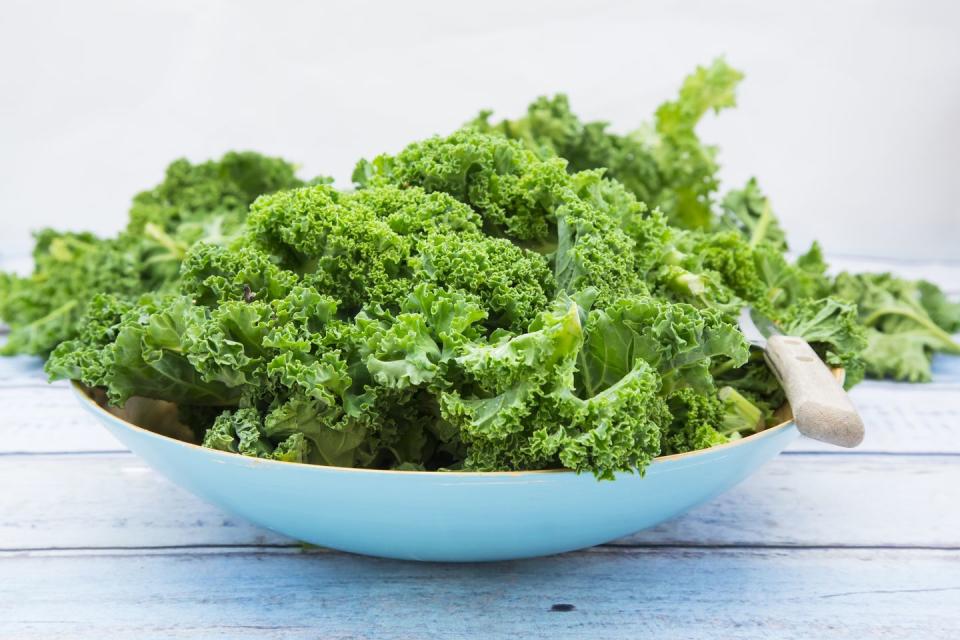
Yogurt
It’s no secret that dairy products are a great source of calcium: Take plain, low-fat yogurt for example. The average serving size of 8 ounces (or 1 cup) has a whopping 448 mg of calcium. On top of that, you’ll get more than 10 grams of protein and roughly 4 grams of good-for-you fats, which will help keep you full until your next meal. Throw some berries on top for added sweetness, antioxidants, and fiber.
Try it: Check out these smoothie recipes to turn your yogurt into a filling veggie- or fruit-packed breakfast.
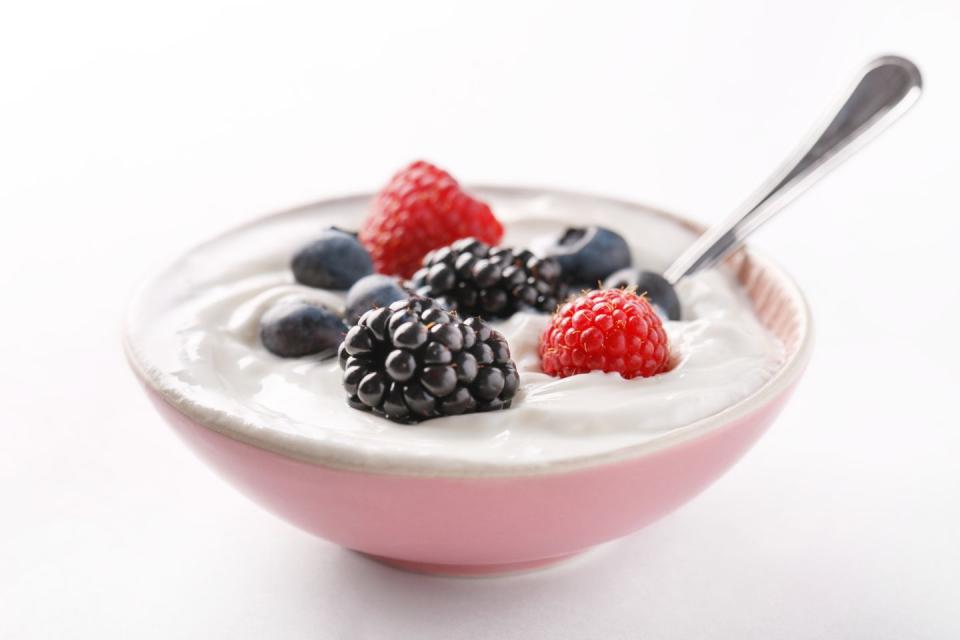
Bok Choy
Also known as Chinese cabbage, bok choy delivers the goods. One cup of the raw plant contains 74 mg of calcium, while one cooked cup offers 158 mg. It’s one of the few plant foods studied that has especially-high calcium absorption, says Dr. Weaver.
Try it: Sauté bok choy with mushrooms and red bell peppers for a quick and tasty way to enjoy lots of veggies at once.
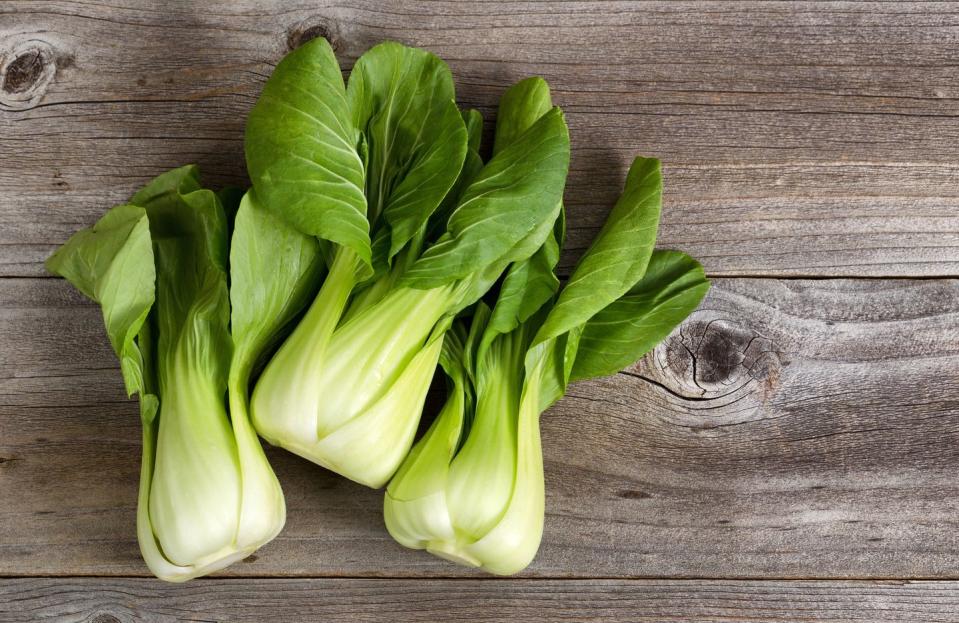
Kefir
If you haven’t tried this yogurt-like drink, which originated in Eastern Europe, you’re in for a nutritious treat. The tangy fermented milk product, made from a variety of yeasts and bacteria, is rich in calcium. Low-fat kefir contains approximately 300 to 350 mg of calcium per cup, says Maples.
Try it: Drink it as an afternoon snack because it’s also full of protein to help you feel full longer. Or, add it to your morning smoothie or cereal.
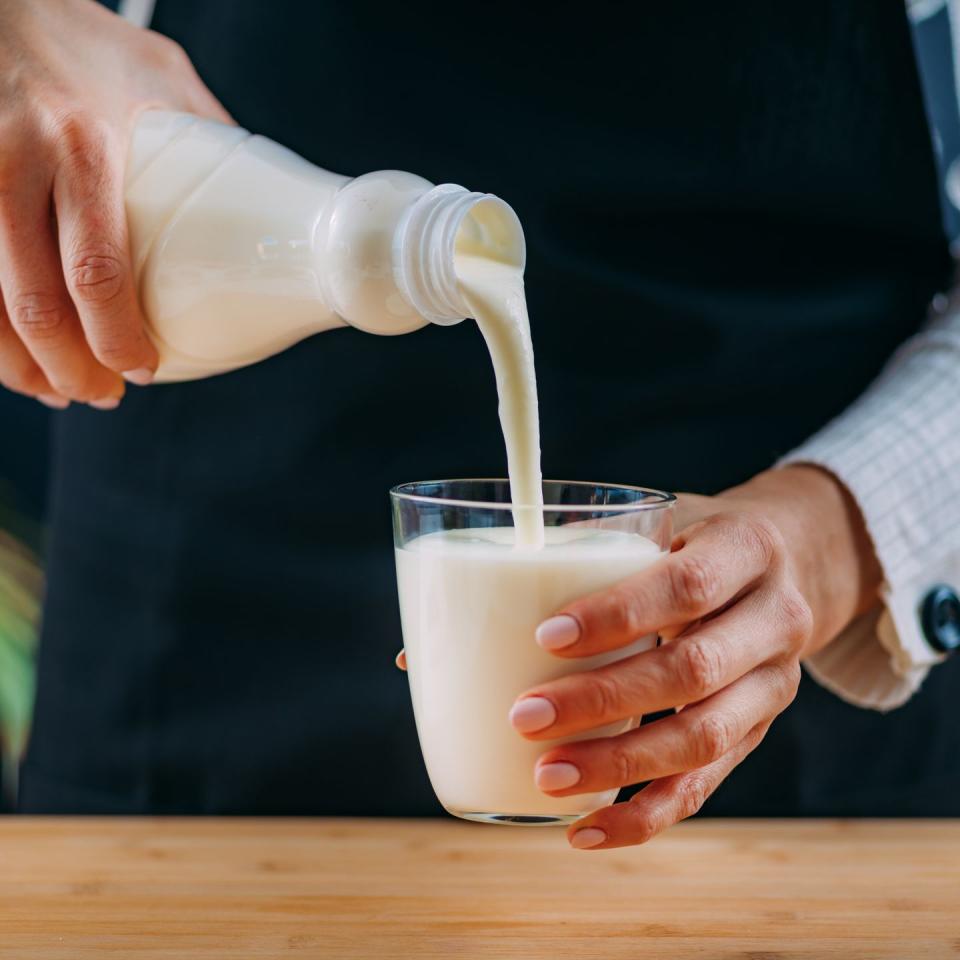
Broccoli
Just one cup of chopped raw broccoli offers 43 mg of calcium, and you’ll get roughly double the calcium in a cooked cup of this crunchy veggie. Bonus: you’ll also get a nice dose of fiber (for your digestion) potassium (for your heart), vitamin C (for your skin), and vitamin A (for healthy immune function and eyes).
Try it: There are endless ways to enjoy broccoli, whether you roast up florets for the perfect last-minute side dish or it into a savory Italian lentil stew.
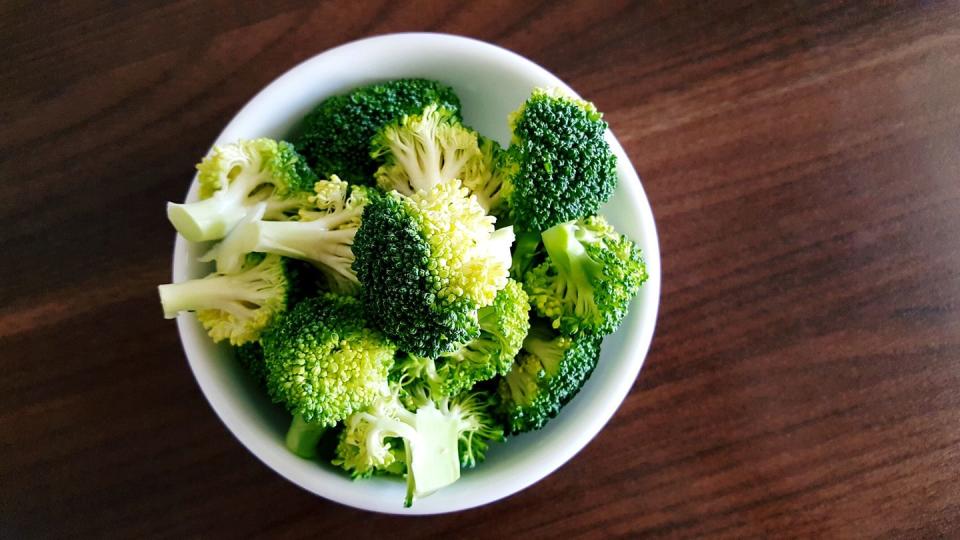
Canned Seafood
Canned seafood saves you time and effort, taking a lot of prep work out of putting together a nutrient-packed meal. You wouldn’t guess that foods like sardines and salmon pack in the calcium, but just one 3.75-ounce can of sardines gets you 351 mg, while 3 ounces of canned salmon delivers 241 mg. Not into fish? Canned shrimp is also a safe bet when it comes to calcium, with 123 mg in a 3-ounce serving.
You’ll reap other health perks, too. Sardines are one of the few foods rich in vitamin D, salmon is a great way to take in heart-healthy omega-3 fatty acids, while shrimp offer protein and other essential nutrients, like selenium and vitamin B12.
Try it: If sardines seem scary, eating them with foods you already like can help you venture into new flavor territories. This Italian sardine salad is a tasty place to start.
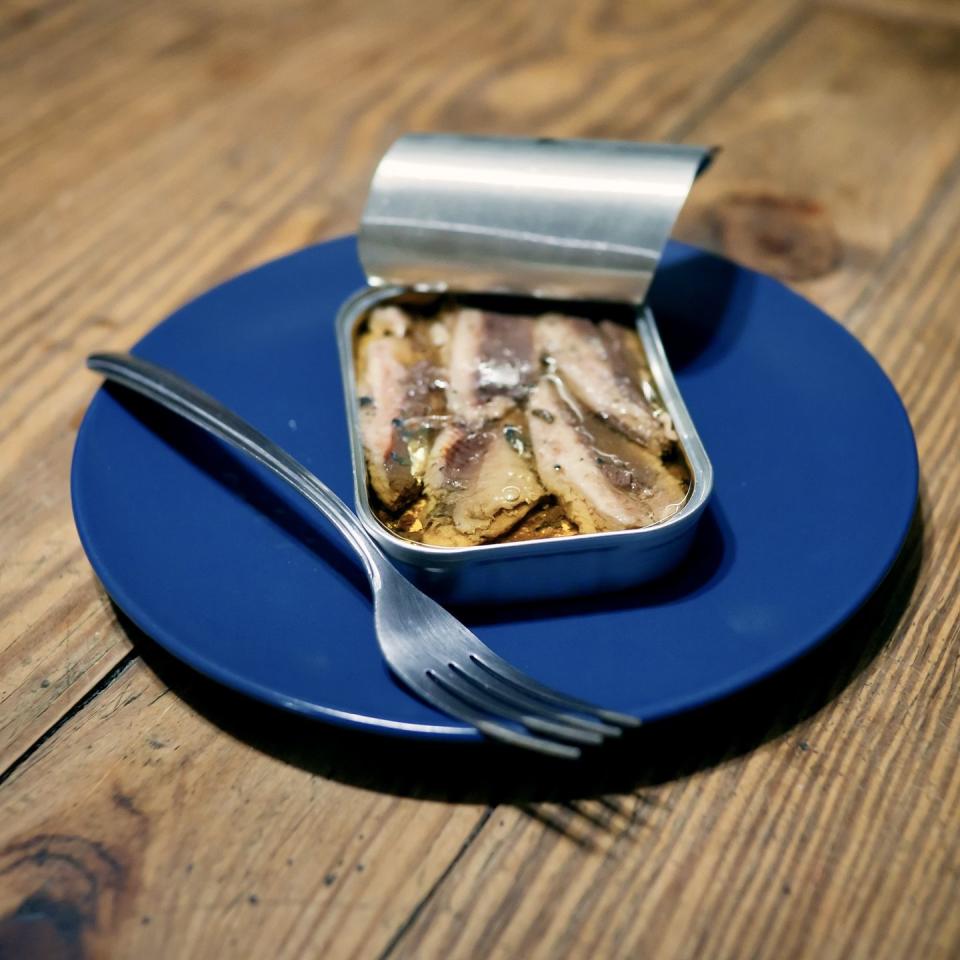
Hard Cheese
Hard cheeses like parmesan or Romano pack about 300 to 335 mg of calcium in one ounce. Skip the powdered types and go for the real deal, which tastes better and doesn’t contain additives. Other cheese varieties are good sources, too, with cheddar at 205 mg per ounce and part-skim mozzarella at 210 mg per ounce.
Try it: Use super-thin slices of hard cheese to top a pizza or salad (extra credit for including calcium-rich kale and other bitter greens).
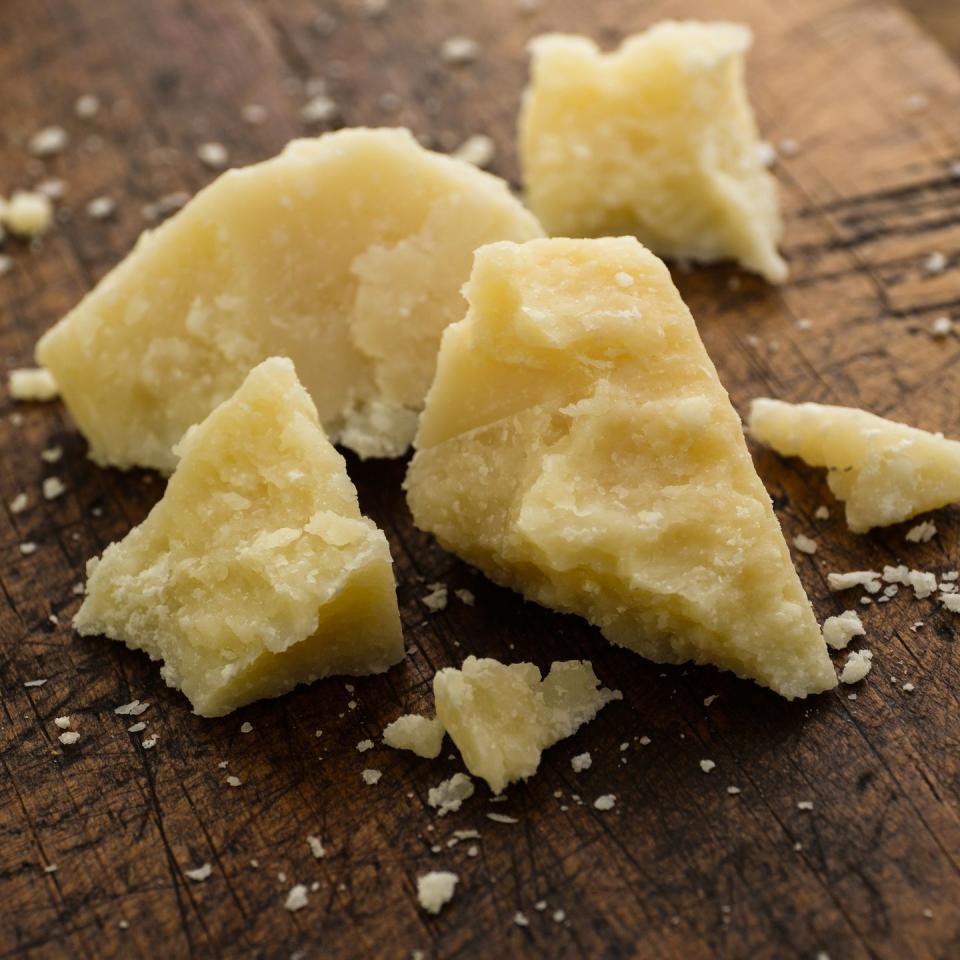
Turnip Greens
These nutritious greens are often overlooked, but a chopped and cooked 1-cup serving contains almost 200 mg of calcium, says Zeratsky. If you’re tired of other greens like spinach, these are a nice change of pace with a slightly bitter flavor.
Try it: Sauté turnip greens with olive oil and garlic and toss over pasta, or substitute for other greens in your favorite recipes.
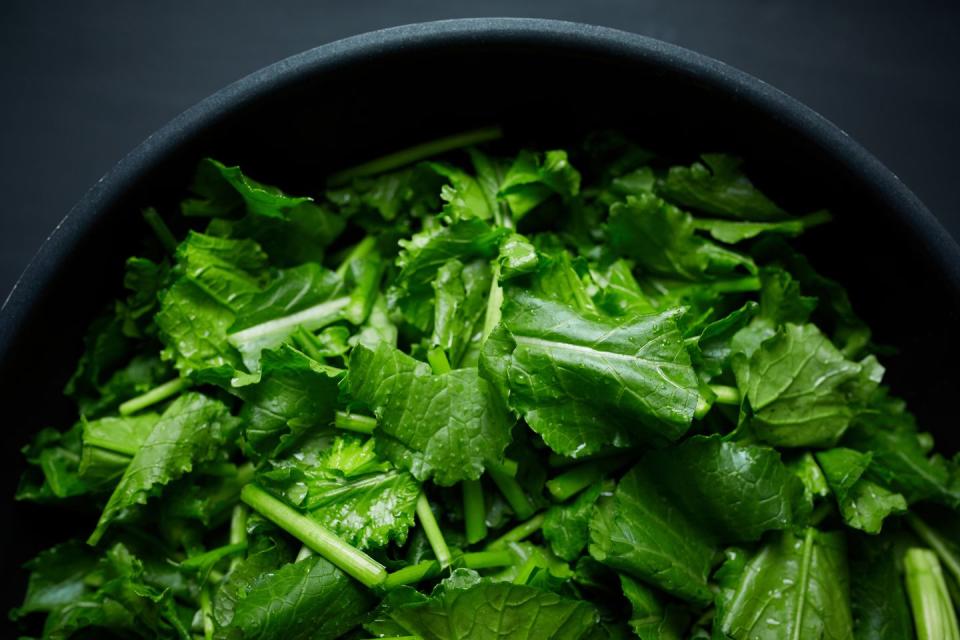
Cottage Cheese
Cottage cheese is another delicious dairy product that offers lots of calcium, but the amount you get will vary depending on the type: Nonfat cottage cheese contains about 97 mg of calcium per half-cup, 2% boasts 125 mg., and whole contains 93 mg of calcium.
Try it: Add a half-cup to your avocado toast to boost your protein intake; cottage cheese also contains about 11 to 14 grams of protein (but watch out for sodium levels, which can be more than 400 mg per serving).

Oranges
Did you know a whole orange contains 65 mg of calcium? You’ll also get 68 mg of vitamin C.
Try it: Make an orange and a handful of almonds your afternoon pick-me-up, or toss segments over baked fish.

Eggnog
Indulge in your favorite holiday beverage this year with the peace of mind that you’re making your bones stronger. One cup contains 250 to 300 mg of calcium.
Try it: Use a tablespoon or two in coffee instead of creamer.

Seeds
Sprinkling seeds on any dish delivers that much-needed crunch, but don’t let their wee size fool you—many seeds are loaded with essential nutrients, including calcium. Just 1 ounce (or 2 tablespoons) of toasted sesame seeds, for example, packs a whopping 280 mg of calcium. The same amount of chia seeds will get you 179 mg.
While nuts, seeds, whole grains, soy isolates, and beans do contain phytic acid, which also binds to calcium, its ability to mess with absorption widely varies or doesn’t have a noticeable effect. For this reason, the NIH still counts these foods toward your calcium intake—just make sure to eat a wide variety of them if you’re dairy-free.
Try it: Sprinkle seeds on top of your salad, oatmeal, or smoothie bowl for added texture.
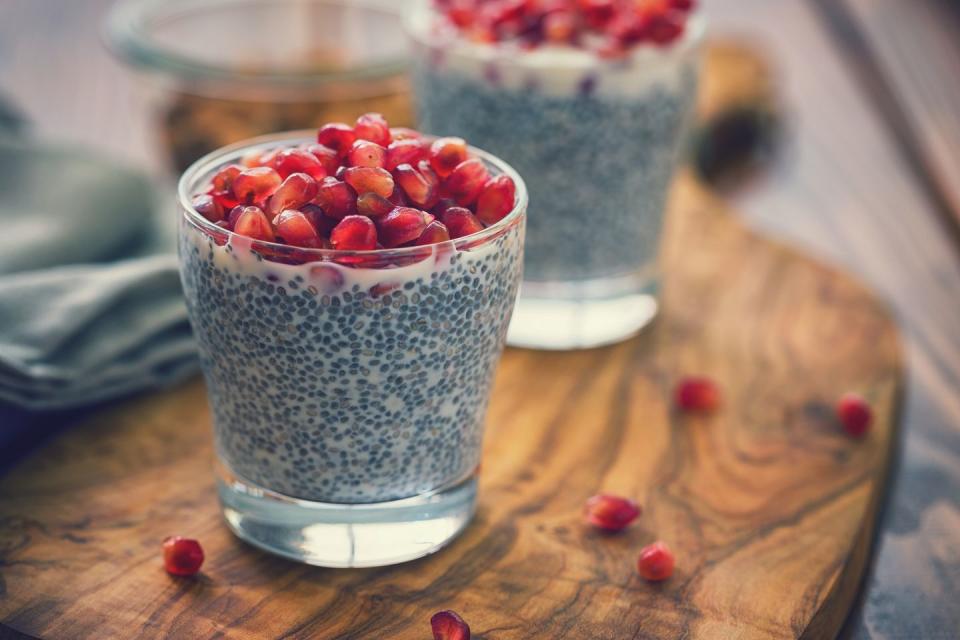
Collard Greens
Collard greens contain an amazing 350 mg of calcium in one cup cooked and chopped. They’re a little bitter, though, and heat mellows their flavor.
Try it: Sauté and add to a veggie frittata, subbing collards for a portion of what the recipe calls for in broccoli or kale.
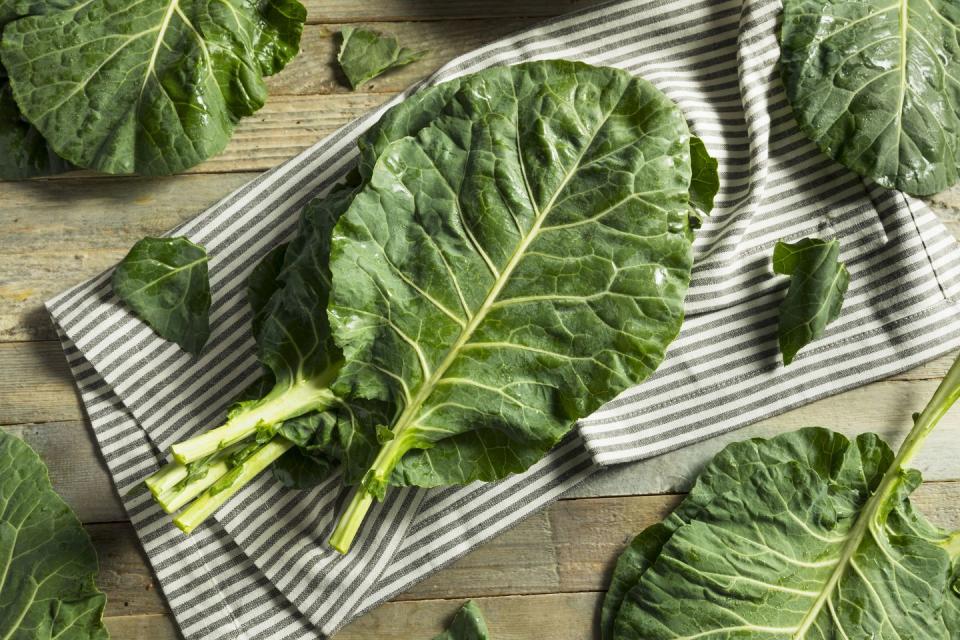
Almonds
Almonds are a go-to snack for a reason. Just one serving (roughly ? cup, or the amount you could hold in your hand) packs tons of heart-healthy unsaturated fats, protein, and fiber to tame your hunger, as well as—you guessed it—nearly 100 mg of calcium!
Try it: Snack on them alone or get creative by making your own granola with toasted almonds and cherries.
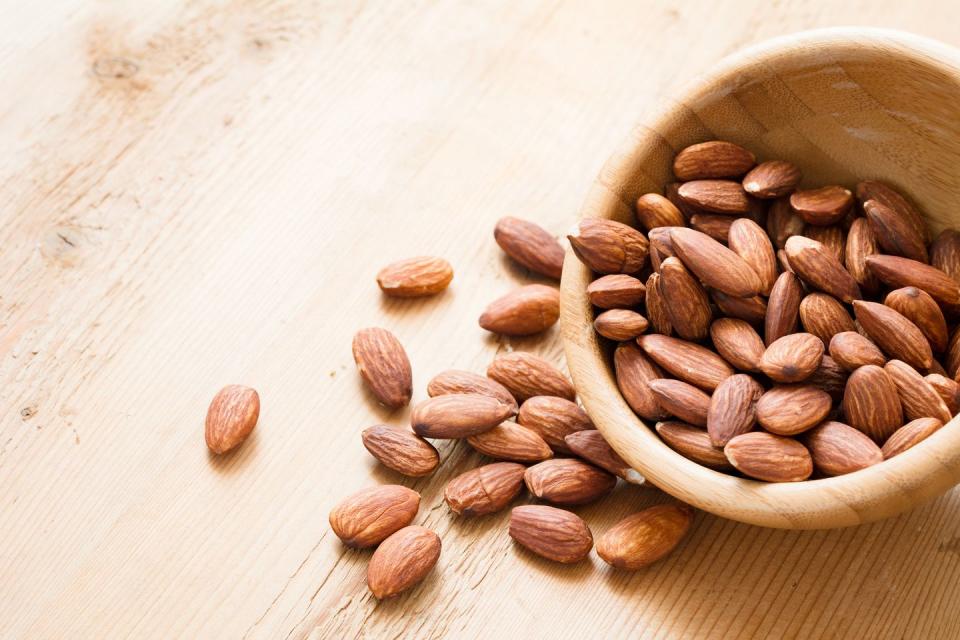
Ice Cream
Ice cream totally counts toward your calcium intake: One-half cup contains 84 mg of calcium, so while it’s not a ton, it does add up if you’re eating a variety of foods. If you prefer, frozen yogurt also contains about 100 mg per half-cup serving.
Try it: Do we *really* need to tell you how to enjoy ice cream?!
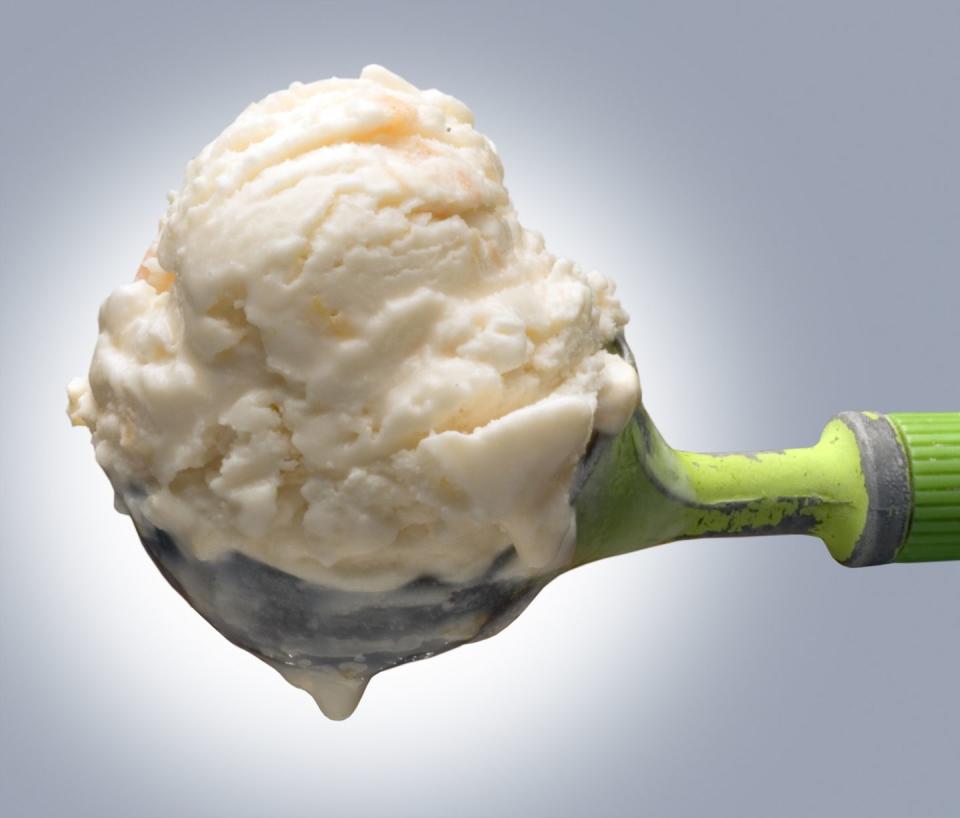
Tofu
Calcium-set tofu is a bone-friendly choice, especially if you avoid animal products. Look for varieties made with calcium sulfate, suggests the NIH. The typical 1/2 cup of fortified tofu will vary anywhere from 250 to 800 mg of calcium, meaning you’ll get roughly the same amount of absorbable calcium as milk, says Dr. Weaver. Tofu is also a great way to sneak in more protein, fiber, and iron if you don’t eat meat.
Try it: If you think tofu is bland, you haven’t tried it in a hearty tofu curry, which is full of powerful flavors like turmeric, garam masala, and ground red pepper.
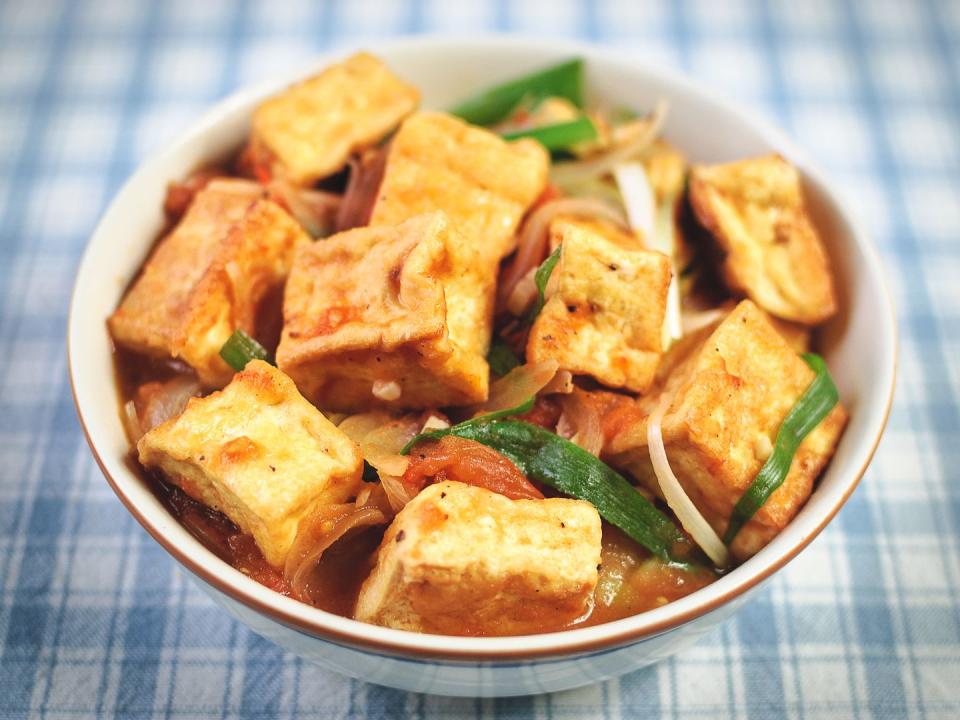
Almond Milk
One cup of unsweetened almond milk has 482 mg of calcium, so it’s worth trying if you’ve never tasted it.
Try it: Use it instead of regular milk on cereal, in your coffee, or as a latte.

White Beans
White beans, such as Great Northerns, contain almost 200 mg of calcium per cup, alongside 19 grams of protein and 12 grams of fiber.
Try it: Toss over pasta with greens, add to citrus salad, substitute for traditional red beans in your favorite chili recipe, or whip up a satisfying white bean dip.

Ricotta Cheese
This mild cheese contains 255 mg of calcium per half-cup, and adds 14 grams of protein. And it’s not just for making lasagna! Ricotta is versatile in both sweet and savory dishes.
Try it: Top with honey and figs for a delicious light dessert, make homemade pierogi, or add to oatmeal for a protein boost, too.
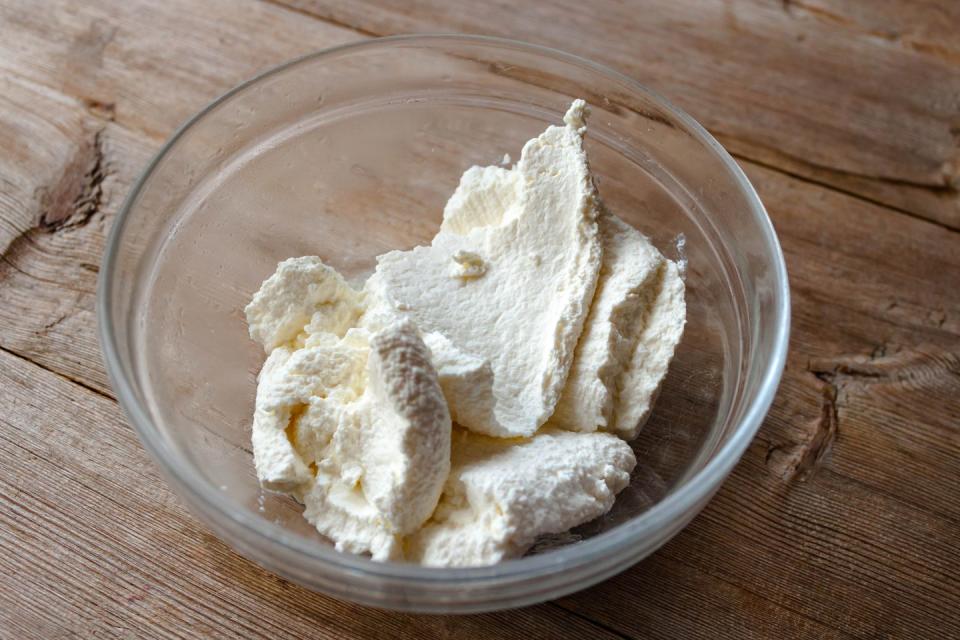
Rhubarb
You would probably never guess that rhubarb contains 348 mg of calcium per cup. Its tart flavor is often paired with sweeter foods such as strawberries, but it’s just as delicious in savory dishes.
Try it: Top yogurt with poached rhubarb, make cobblers or muffins, or dress up a mixed drink such as a mimosa with a spoonful of stewed rhubarb.
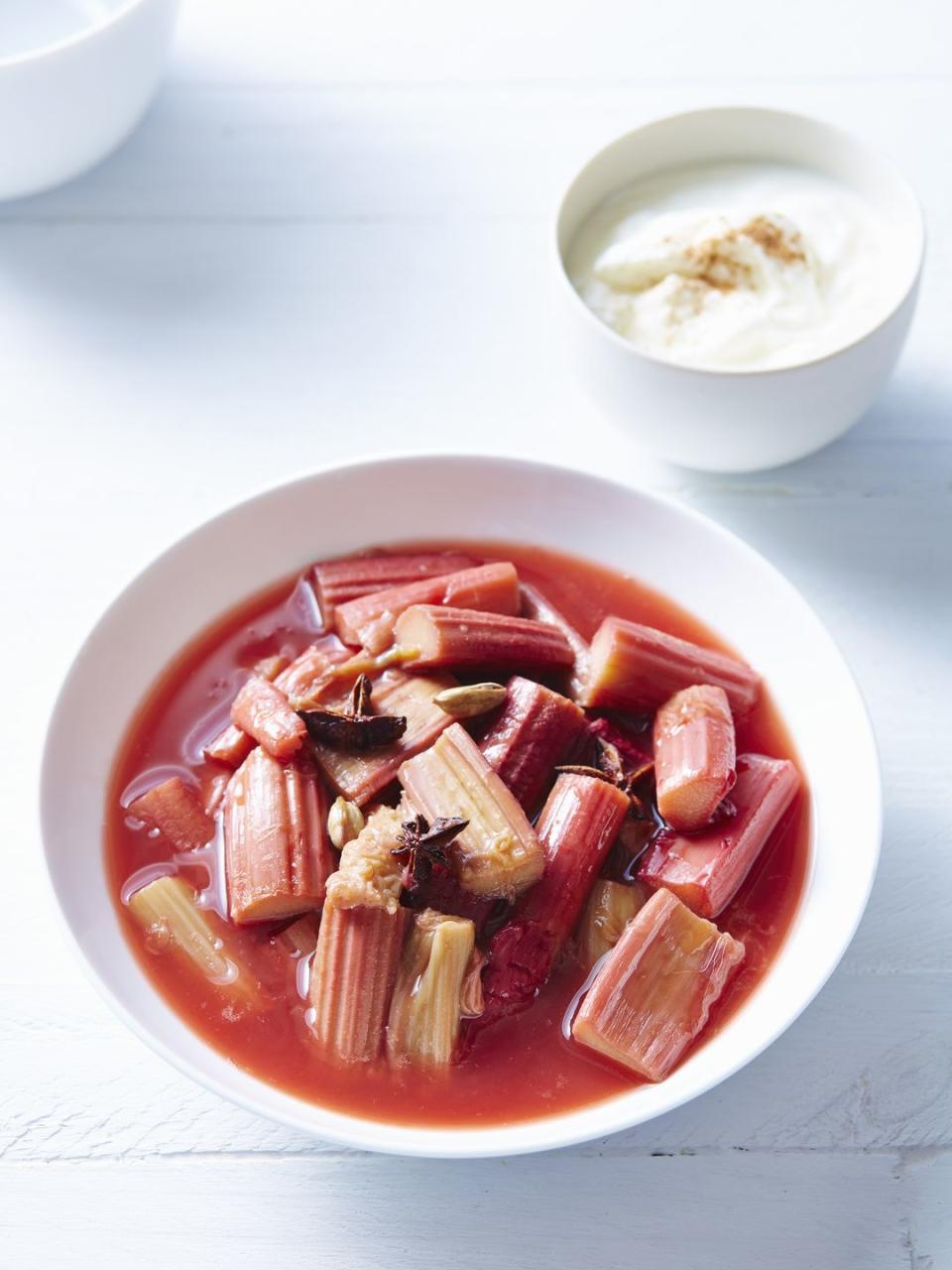
Fortified Frozen Waffles
Many frozen brands on the market contain about 100 mg per waffle. In a typical serving size of two waffles, that means you’ll get a decent amount of calcium at 200 mg, says Maples.
Try it: Instead of toast, try frozen waffles topped with calcium-rich almond butter, which contains another 55mg of calcium per tablespoon.
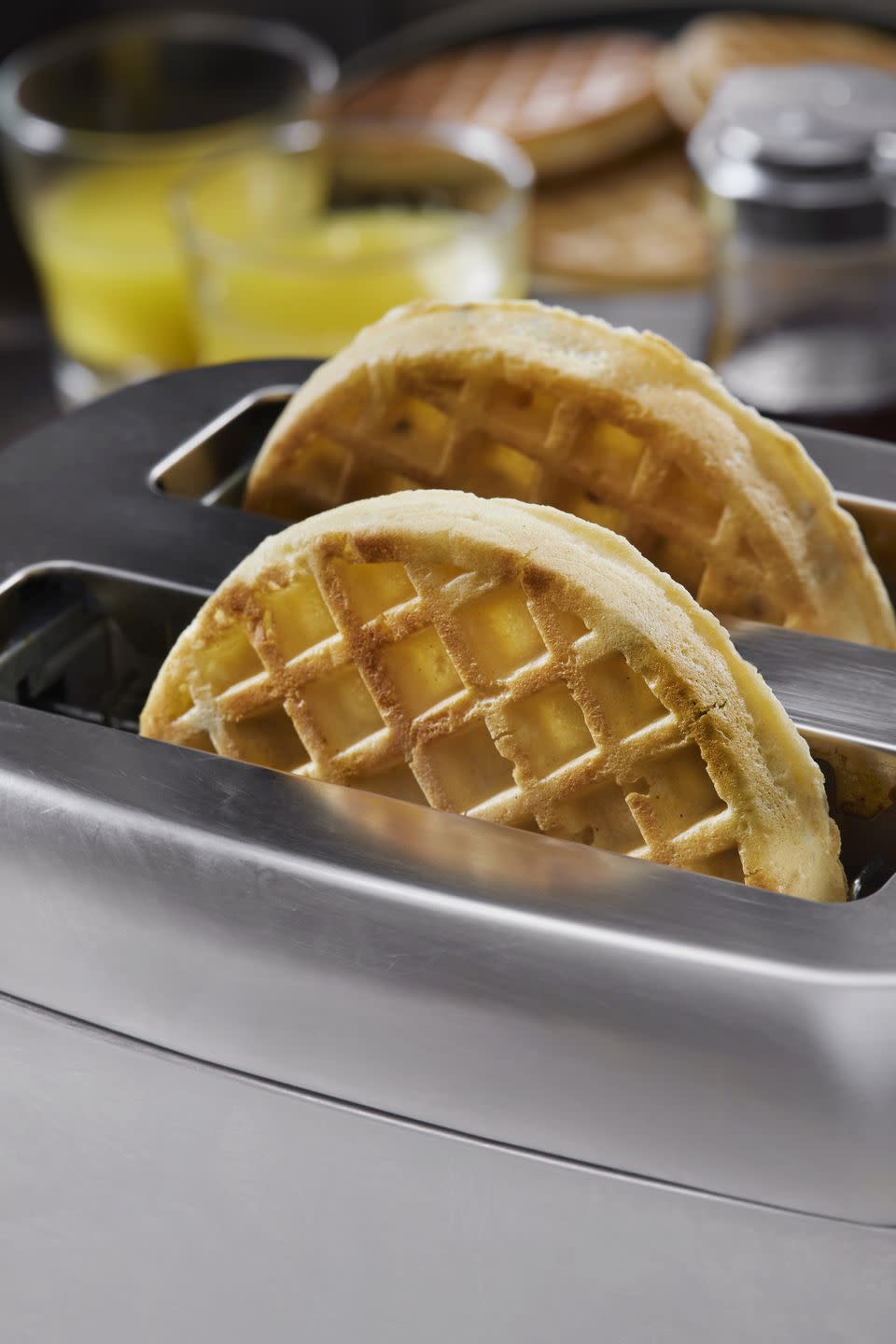
Figs
Figs’ sweetness tends to upstage their calcium content: One serving (about 4 figs) has 50 to 60 mg of calcium, along with a decent dose of potassium and fiber.
Try it: Stack figs on top of ricotta—which offers an extra 77 mg of calcium in two tablespoons—in this easy-to-make breakfast sandwich recipe.
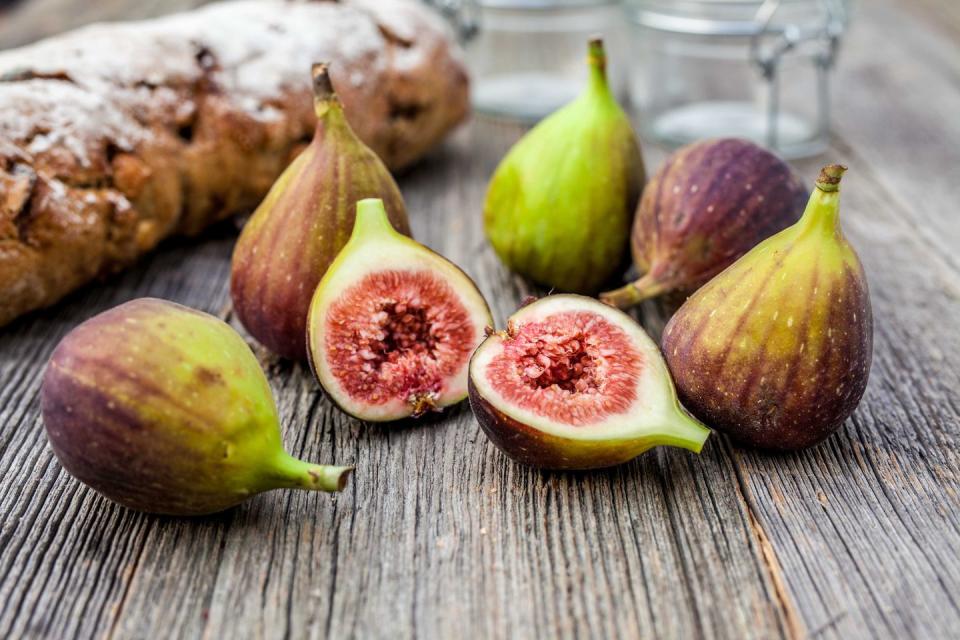
Whey Protein Powder
Beyond its muscle-building benefits (thanks to its complete list of essential amino acids), whey protein powder offers nearly 90 mg of calcium per scoop, since it’s derived from cow’s milk. Given that many brands require a couple of scoops, you could easily double your intake. How to pick a powder that’s actually good for you? Make sure a form of whey is listed as the first ingredient, and avoid ones that contain a lot of sugar or artificial sweeteners.
Try it: There’s no shortage of smoothie recipes that could benefit from a scoop of whey, but you can get more creative with your powder. Add whey to pancakes, protein balls, or even blueberry oatmeal.
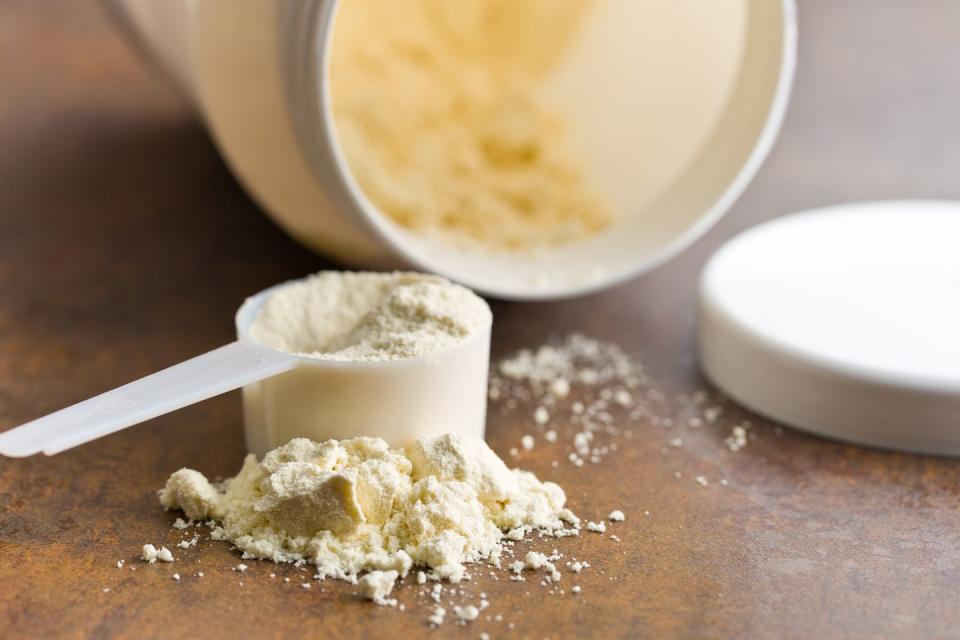
Soy Milk
Calcium-fortified soy milk contains just as much of the mineral as cow’s milk, Dr. Weaver found when she conducted a test on Silk-brand soy milk. Look for calcium carbonate on the label, she suggests, since soy milk fortified with tricalcium phosphate doesn’t perform quite as well.
Try it: Whisk together 2 cups of warmed vanilla soy milk with 1 cup of your favorite brewed coffee for a tasty latte alternative.
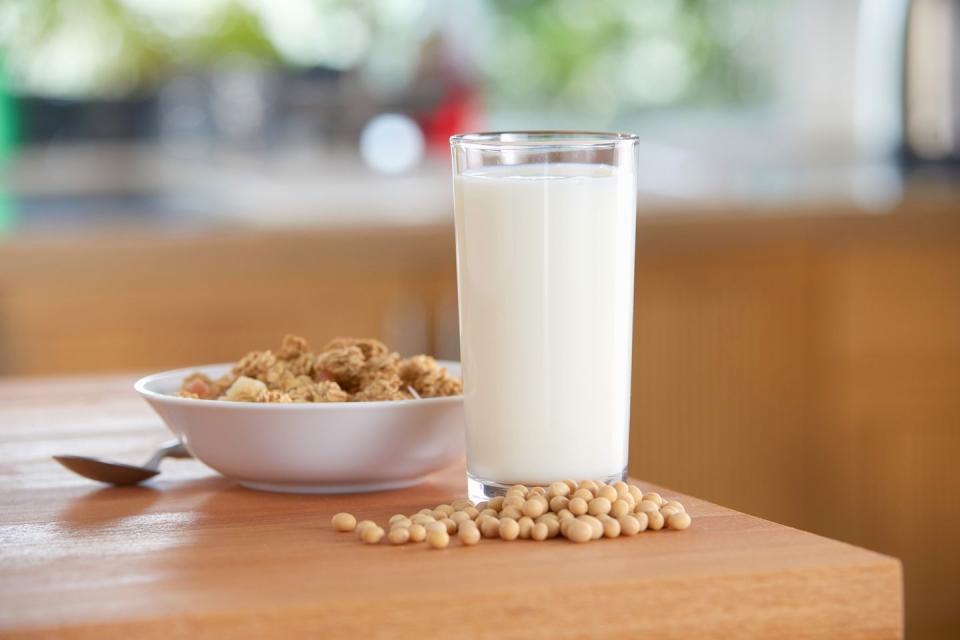
Orange Juice
Swap your milk for a glass of calcium-fortified orange juice. Just one cup will deliver roughly 350 mg of calcium, along with vitamin D (as long as it is fortified), vitamin C, vitamin A, and even potassium.
Try it: Sip it on its own or blend one cup into this refreshing strawberry banana smoothie.

Canned Tomatoes
Canned tomatoes are a possibly-unexpected calcium source, and one cup contains about 80 mg. As with many other canned foods, heat-treated foods concentrate the nutrients, says Zeratsky.
Try it: Use canned tomatoes in soups and sauces or to top polenta, pasta, and baked eggs.
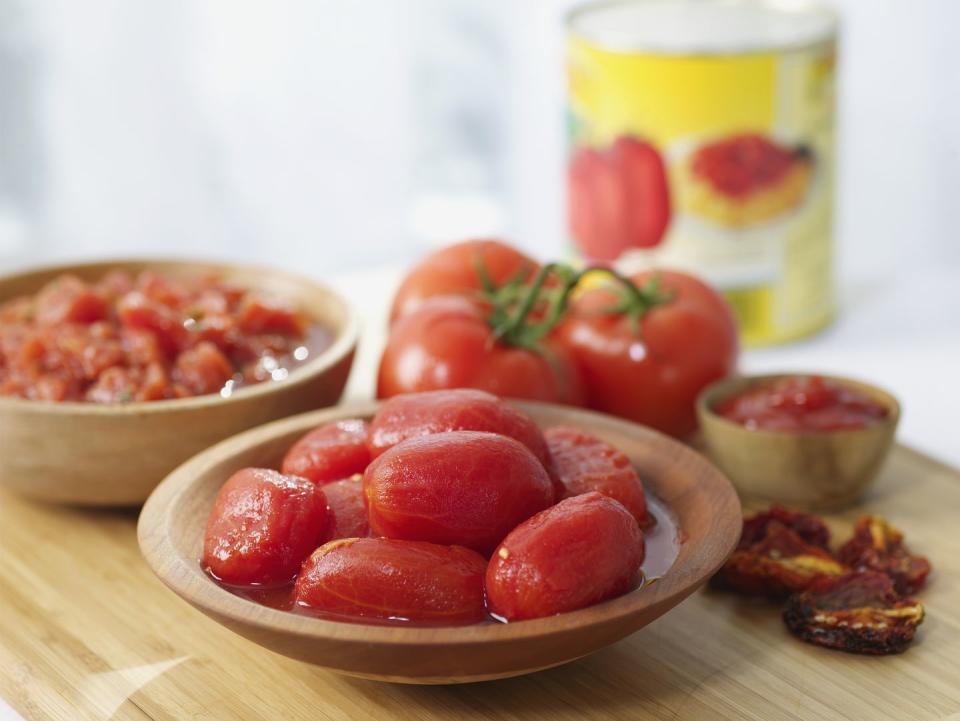
Black Beans
One cup of these delicious beans contain 84 mg; while that’s not huge, it adds up when you’re eating a variety of foods. They’re also a great source of protein and fiber.
Try it: Substitute black beans for ground beef in tacos, or make black bean burgers.
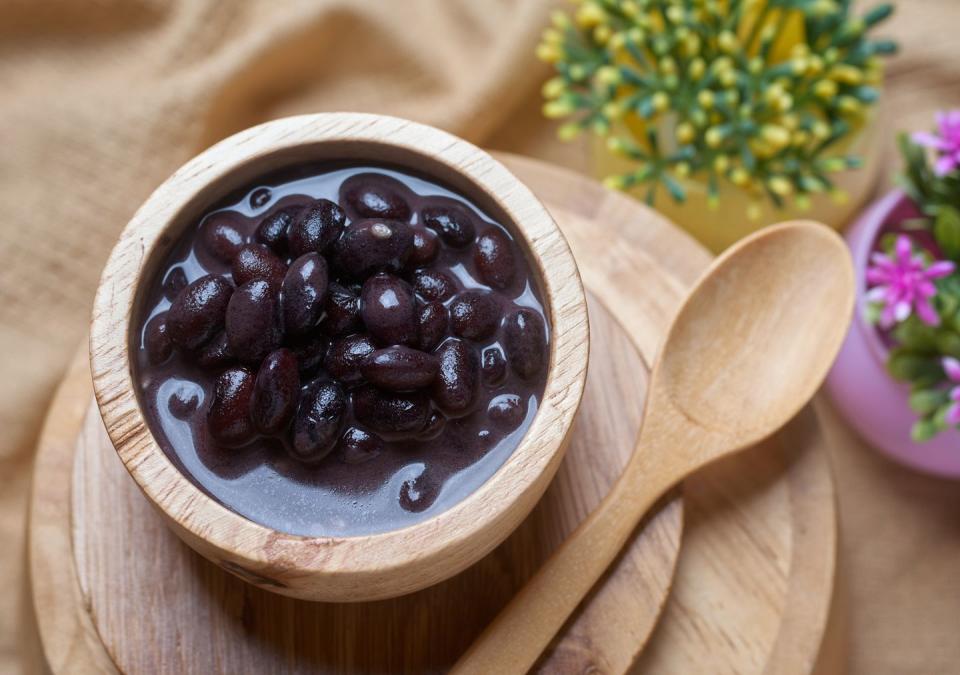
Butternut Squash
Butternut squash contains 84 mg of calcium per one cup, so it’s a delicious way to get a healthy dose of calcium. They’re available year-round but most plentiful in the fall, along with many other types of winter squash.
Try it: Make a creamy soup to warm you on a chilly day, or surprise your guests with butternut squash apple cake (they’ll never guess what’s in it besides apples!).
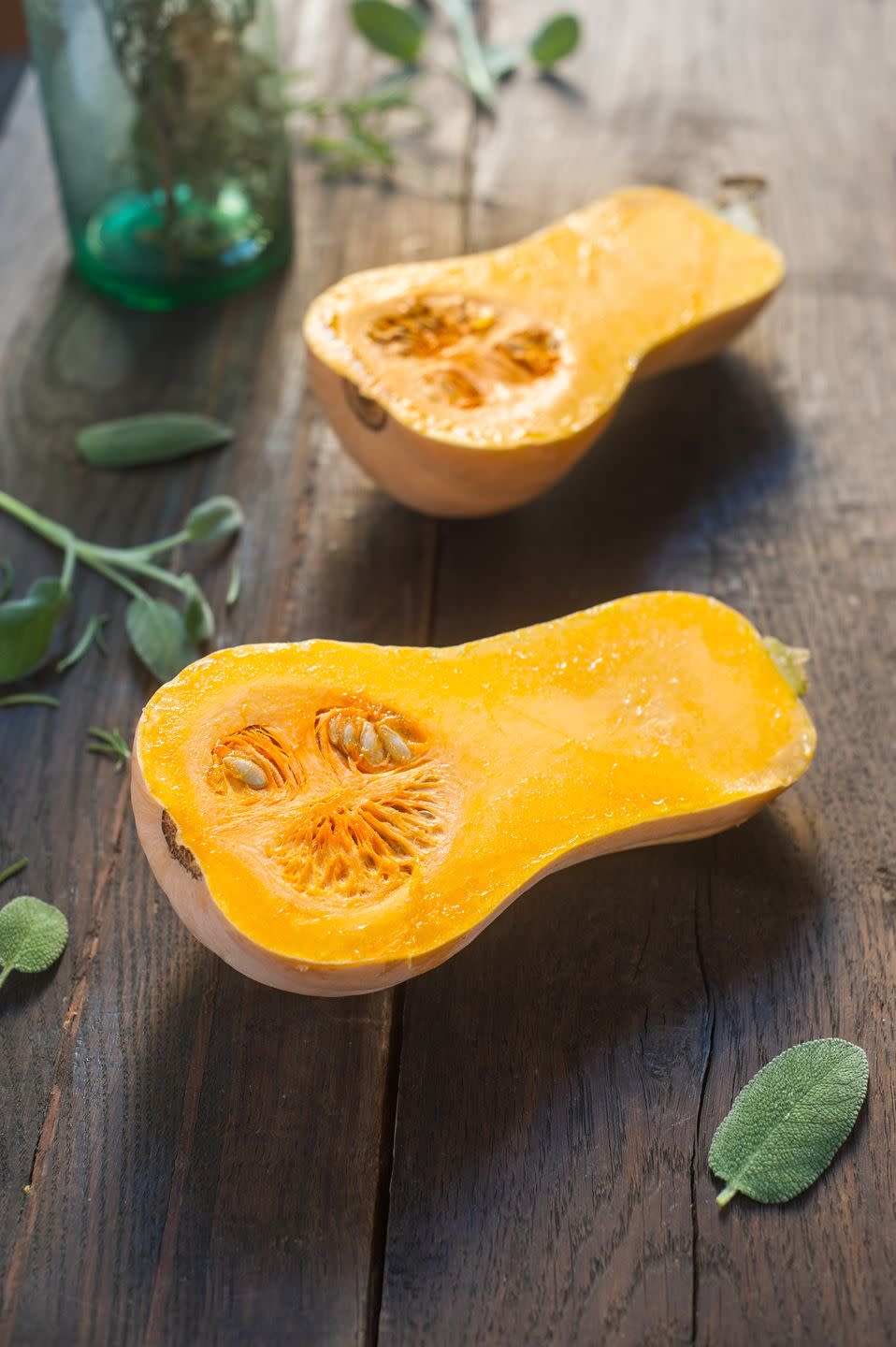
Okra
It’s not a ton, but eight pods of okra offer about 65 mg of calcium. Add them to dishes to provide a little extra.
Try it: Cook as a side dish with tomatoes, ginger, and basil, or toss into chicken gumbo to thicken the stew.

Garbanzo Beans
Also called chickpeas, garbanzo beans contain a surprising 109 mg of calcium per cup. They also contain 10 g of protein and about 10 grams of fiber to help you feel full longer.
Try it: Substitute garbanzo beans for other types of beans in soups and stews, such as garbanzos with chorizo and spinach, or serve them as a side dish.
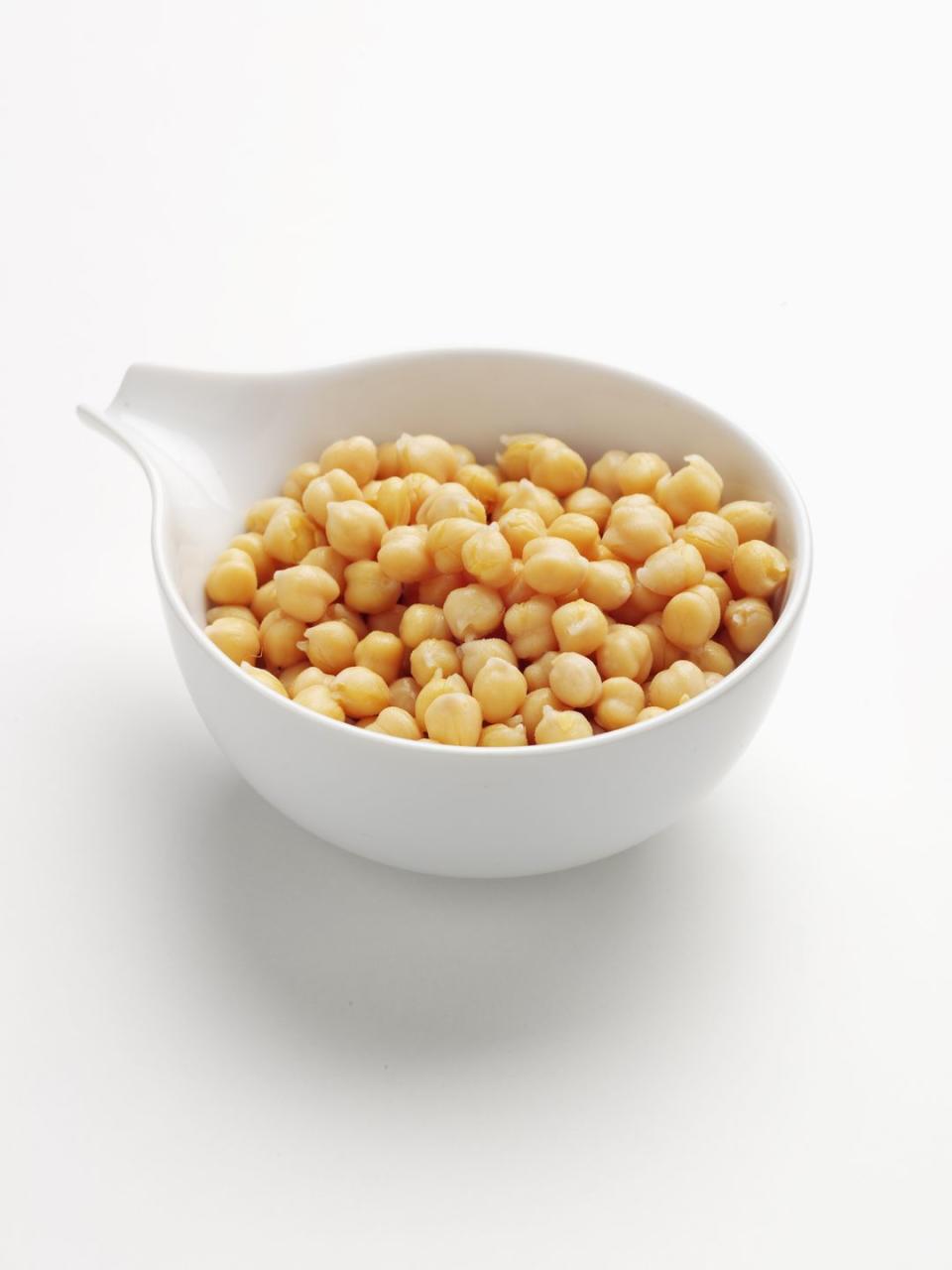
Rice Milk
One cup of unsweetened rice milk contains 281 mg of calcium, so it’s a great substitute if you can’t drink dairy due to GI problems such as bloating. As with all plant milks, which contain little calcium naturally, they’re fortified to boost the calcium content.
Try it: Swap rice milk in any dish for which you’d use regular milk, such as smoothies and lattes.
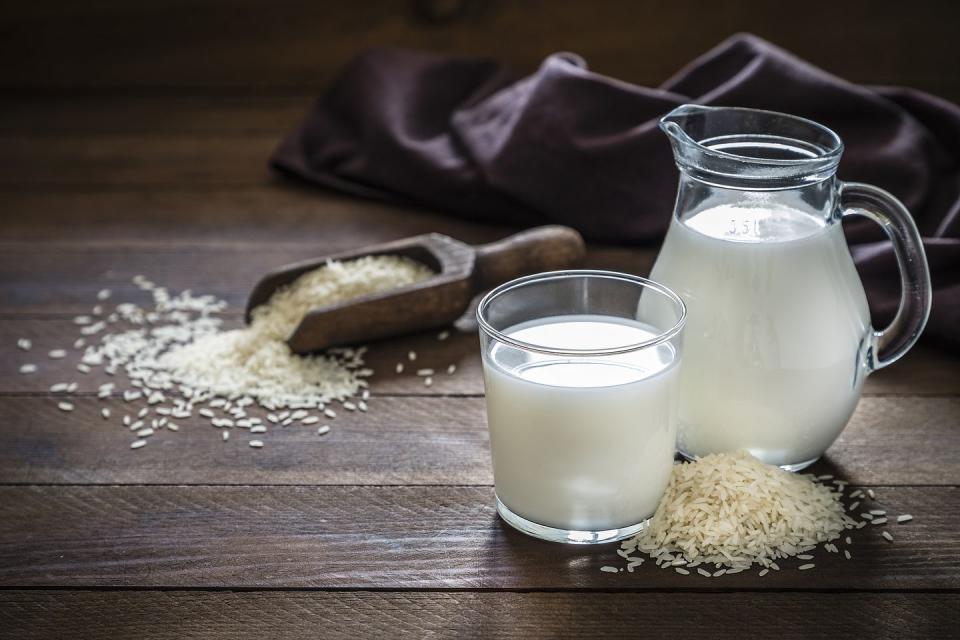
Amaranth
Amaranth is a lesser-known whole grain, but it contains 116 mg of calcium per cup. With its mild, nutty flavor, it’s a great stand-in for oatmeal or can be tossed in trail mix.
Try it: This gluten-free grain can be popped like popcorn, served as a side dish as an alternative to rice, or baked into a lemony pudding.
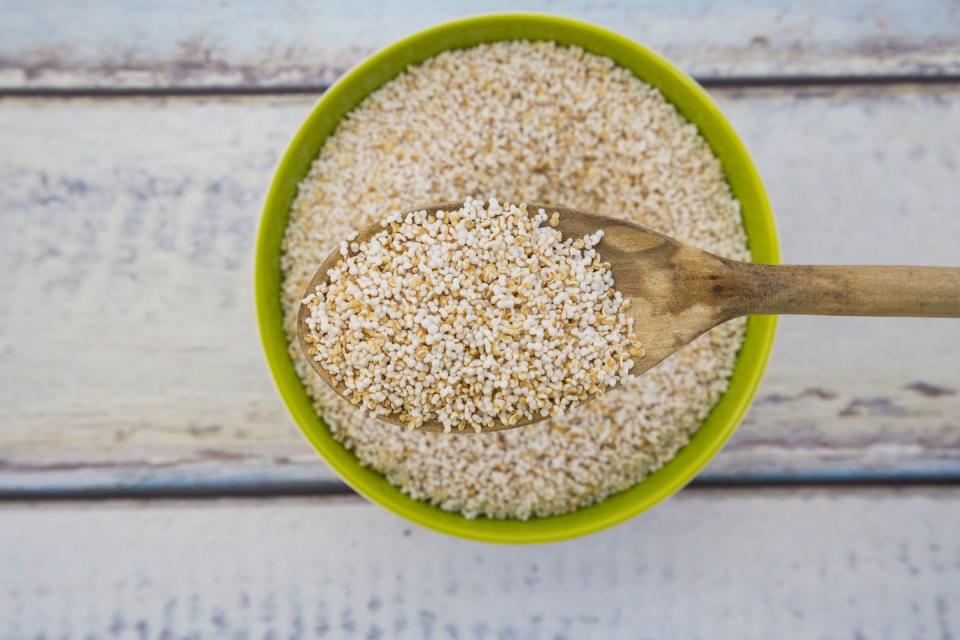
Edamame
Edamame, or green soybeans, contain 97 mg of calcium. They’re also full of 18 grams of protein and 8 grams of fiber.
Try it: Turn versatile green soybeans into a crunchy snack, toss over salads, or make a tasty edamame dip.
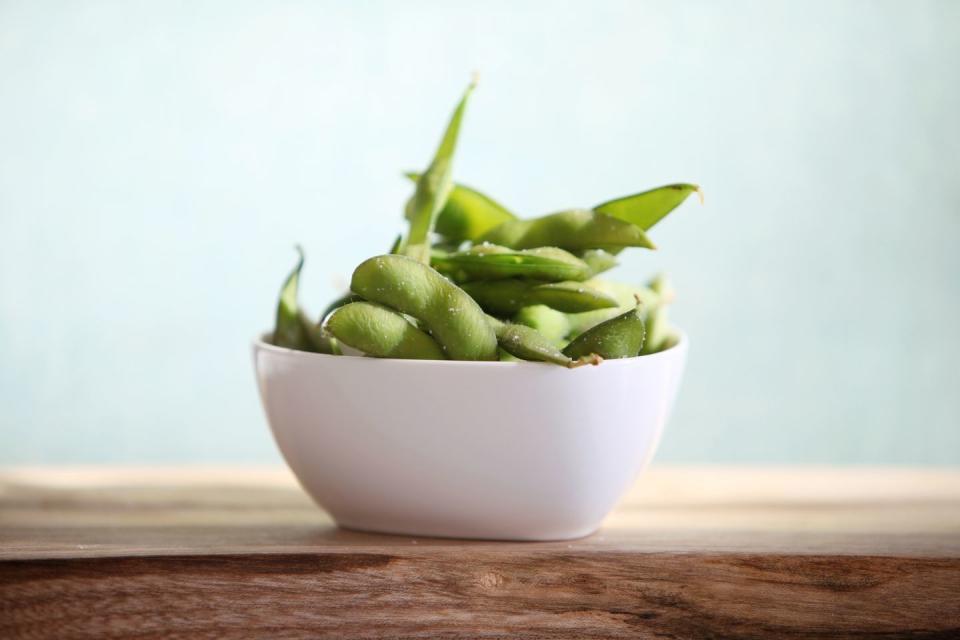
Powdered Milk
You don’t have to drink powdered milk to get its benefits. Adding 5 tablespoons of dry powdered milk to dishes can boost calcium by 300 mg, says Maples.
Try it: Add to smoothies, yeast breads, mashed potatoes, and gravies to boost calcium content.
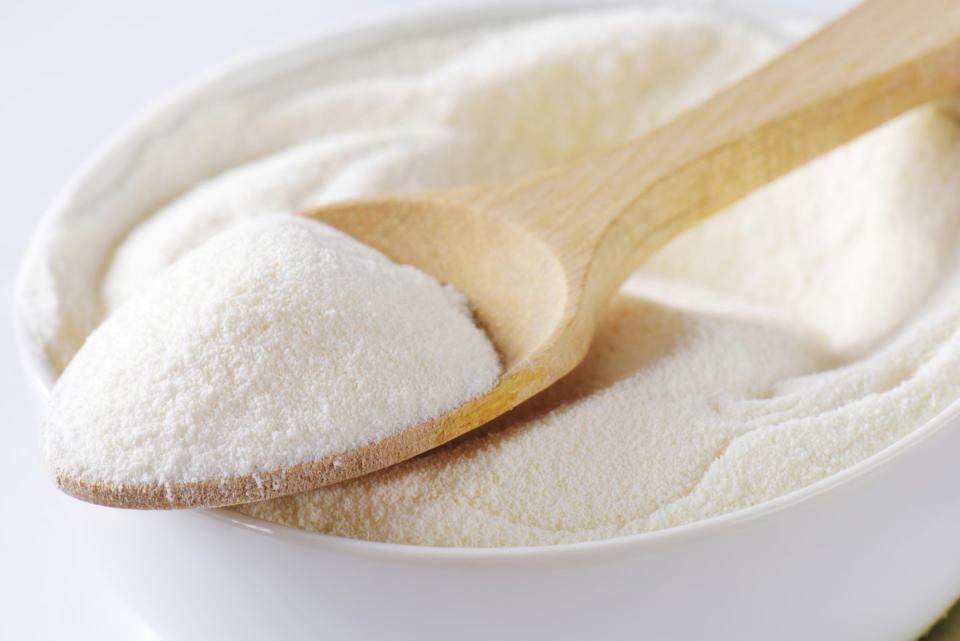
Fortified English Muffin
Instead of toast, eat a fortified English muffin for breakfast or an afternoon snack. Bonus points if it’s whole grain!
Try it: Top with other calcium-rich foods such as part-skim ricotta or cottage cheese, or melt a slice of cheddar on it.

Fortified Cereals
We know how hard it is to find a healthy breakfast cereal, but it’s worth it. Beyond their tastiness, cereal brands fortified with calcium can get you anywhere from 100 to 1,000 mg of the stuff.
Look for varieties that pack as little sugar as possible (ideally 6 grams or less, but going up to 10 is okay). Fiber is your friend here—the more fiber a cereal contains, the more filling it will be, so opt for one that has 5 grams of fiber or more.
Try it: No need to get fancy here. Find your favorite low-sugar cereal option and top with lots of fresh fruit and calcium-rich milk of choice. If you want to avoid milk altogether, add your favorite cereal to this ultimate trail mix recipe.

Ultra-Filtered Milk
You already know it’s an excellent way to get your calcium, with a cup of either skim or 2 percent milk providing about 316 mg per cup and 8 grams of protein. But ultra-filtered milks, which concentrate calcium and protein and filter out most sugar, contain nearly 400 mg of calcium and 13 grams of protein.
Try it: Ultra-filtered milk is often more expensive than “regular” milk, but it is one more way to boost calcium slightly overall.
*All nutrient amounts are sourced via the standard reference food composition database from the United States Department of Agriculture
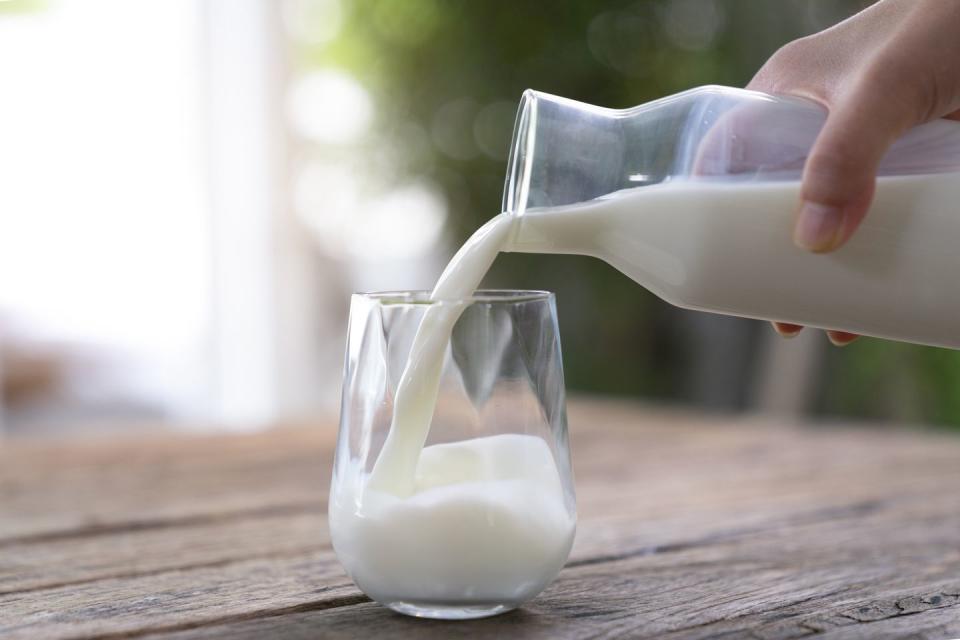
You Might Also Like